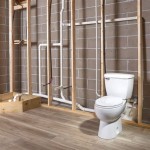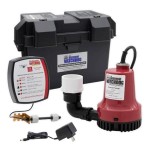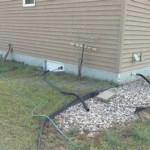How To Install Interior Drain Tile In Basement Floor Singapore
Basements in Singapore are often susceptible to dampness and moisture issues due to the tropical climate and the presence of groundwater. These problems can lead to mold growth, structural damage, and health concerns. Interior drain tile is an effective solution for addressing these issues by creating a drainage system below the basement floor. This article will guide you through the process of installing interior drain tile in your basement floor in Singapore.
Understanding Interior Drain Tile
Interior drain tile, also known as a French drain, is a system consisting of perforated pipes embedded in a bed of gravel. The gravel allows water to filter into the pipes, which then direct it away from the foundation. This system acts as a barrier, preventing water from accumulating under the basement floor and causing damage. Here are some key benefits of using interior drain tile:
•
Moisture Control:
Effectively removes moisture from the basement subfloor, reducing the risk of mold and mildew growth.•
Structural Integrity:
Prevents water damage to foundation walls and supporting structures.•
Improved Indoor Air Quality:
Eliminates moisture buildup, improving the air quality in your basement.•
Reduced Energy Costs:
Dry basements are more energy-efficient, reducing heating and cooling costs.Steps for Installing Interior Drain Tile
Installing interior drain tile involves several steps, each requiring careful attention to ensure proper drainage and longevity of the system.
1. Preparation and Excavation
•
Planning:
Determine the location of the drain tile system and calculate the required pipe length. Ensure the drain tile is routed towards a suitable discharge point, such as a sump pump or a storm drain.•
Excavation:
Dig a trench around the perimeter of the basement floor, allowing sufficient room to install the drain tile and gravel. The depth should be at least 4 inches below the finished floor level.•
Sloping:
Ensure the trench has a consistent slope of at least ¼ inch per foot towards the discharge point, allowing water to flow towards the drain tile effectively.2. Installation of Drain Tile
•
Pipe Selection:
Choose high-density polyethylene (HDPE) pipes with a minimum diameter of 4 inches for optimal drainage. Perforated pipes with a minimum of 1/8-inch holes are recommended for efficient water absorption.•
Pipe Layout:
Lay the drain tile pipe along the bottom of the trench, ensuring the holes face the bottom of the trench. Secure the pipe with pipe supports to prevent it from moving during gravel installation.•
Connections:
Connect the individual drain tile pipes using couplings or other appropriate connectors. Use a gasket or sealant to ensure a watertight connection.3. Gravel Backfill
•
Gravel Selection:
Use clean, washed, and graded gravel with a size between ½ inch and 1 inch for optimal drainage. Avoid using gravel with fines or dust, which can clog the drain tile and hinder drainage.•
Gravel Installation:
Fill the trench with gravel, starting at the lowest point near the discharge point. Gradually backfill the trench, ensuring the gravel is compacted around the drain tile to prevent movement or settling.•
Overlapping Layers:
Add a layer of gravel on top of the drain tile, ensuring it overlaps the pipe by at least 2 inches on all sides. This layer helps direct water flow towards the drain tile.4. Concrete Slab and Finishing
•
Concrete Pouring:
Pour a concrete slab over the gravel bed, ensuring it is level and sealed to prevent water infiltration. Use a concrete mix that is specifically designed for basement applications.•
Final Touches:
Once the concrete slab has cured completely, apply a moisture barrier on the surface to further prevent moisture penetration. Install any necessary flooring over the concrete slab.Considerations for Interior Drain Tile Installation
•
Code Compliance:
Ensure you comply with the relevant building codes and regulations in Singapore. Consult with local authorities or a licensed contractor to ensure adherence to regulations.•
Professional Installation:
While DIY installation is possible, it is advisable to engage a qualified and experienced contractor for professional installation of interior drain tile. This guarantees proper system design, installation, and long-term performance.•
Maintenance:
Regularly inspect the drain tile system for blockages or other issues. Ensure the sump pump or discharge point operates efficiently to prevent water buildup in the basement.
Basement Waterproofing Singapore Sg

Waterproofing And Weatherproofing Materials Contractor Singapore Le Fong Building Services

Waterproofing A Basement 3 Proven Methods Benefits Tips Contractor Singapore Le Fong Building Services

Three Tips To Control Moisture In Basement Tile Installations Laticrete

Design For Maintainability Of Basements And Wet Areas

Basement Leaks Where The Wall Meets Floor Waterproofing Contractor

Square Drain Original Design Now In

Basement Waterproofing In Singapore 1 No Ing Solution

How To Install A New Bathroom On Concrete Slab Or In Basement

4 Ways To Design A Modern And Beautiful Bathroom Using Ess







